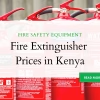- Empty cart.
- Continue Shopping
SAFETY FOOTWEAR IN KENYA

Safety footwear must be worn appropriately, as the health and safety laws suggest(OSHA). When selecting safety work shoes, it must be fit on a purpose to prevent injuries.
There are several factors that make sure the safety work boot is fit for the environment.
Factors to consider while selecting a safety footwear
Various factors are considered, such as durability and comfort. Risk assessment is supposed to be carried out first, which is a process of evaluating potential risks that may involve while undertaking a project.
It is a critical process that helps to identify sensible measures in order to control the risks at the workplace.
This assessment helps employers to answer what processes, activities, or substances that could injure or harm the health of the employees.
These hazards range from; extreme weather conditions such as high temperatures, wet conditions, cuts and punctures, falling objects, acid, metal and chemical splash, slips, trips, and falls, and electrostatic build-up.
Safety Footwear risk assessment
While carrying out the risk assessment, tasks to which working personnel is subjected and the environment in which they work should be considered.
The key points may include;
- Are workplace surfaces slippery?
- Is there any risk of coming into contact with chemicals?
- Is there a risk of falling objects?
- Is ankle support necessary?
- Will the workers be easily exposed to extreme weather conditions?
- Are our working personnel likely to work in wet conditions?
It is important to concentrate on the risks that may cause big harm. Once the assessment is done, one can proceed to look for the right safety footwear with the correct features to ensure maximum protection.
Sectors and features where safety shoes are mostly used;
Main risks in this sector include; wet feet, chemical burns, and contamination by chemical agents. Best safety work shoes to be used in this sector should have following features; Rocklander safety work boot and UltimatePlus Safety Boot are the recommended for you. Transportation and lifting of heavy objects is a common scenario at the constructions industry, thus there is a potential risk of these objects falling on employers’ feet. Another potential risk is sharp nails and objects that pose a risk to injure workers’ feet. Safety footwear acts as a barrier to protect and take care of the feet. These safety work boots should have these features; Vaultex safety work boot and Safety jogger work shoes is recommended. Most of the workers in these manufacturing industries work on wet floors, which is a potential risk of slipping and falling. Best Girl Safety Jogger shoes, Hummock Safety Boots S3 Standard and BestBoy safety boots are recommended. These industries require safety work shoes that are waterproof and have thermal features. It has genuine leather for long durability as well as a rubber sole thus making it slip-resistant. Safety work shoes required should be; Ultimate plus safety work shoes and Safety Jogger MANAGER Shoes EN 20347:2022 are recommended. Agriculture

Waterproof
Anti-static
Resistant to animal fats and acid
Protective toe-cap, and
Protective midsole.Construction

Food and drink manufacturing

Recommended safety work shoes to be used here should be;
Oil and petrochemical industries

SEE ALSO; PERSONAL PROTECTIVE EQUIPMENT
CONCLUSION
Safety work boots are essential to every worker because they are on their feet all day long hence keeping workers’ feet safe and comfortable. Choosing the right safety boot is important for foot health. Wearing a low-quality safety shoes and unsupportive boots can lead to injuries.
We Safety Hub Enterprises, we deal with quality safety boots, that meets health and safety regulations standards, that meet category EN ISO 20345. Your safety is our concern!







